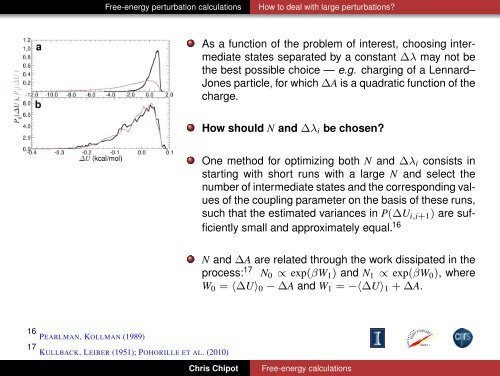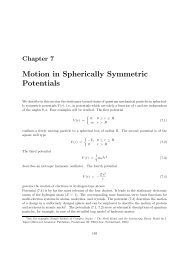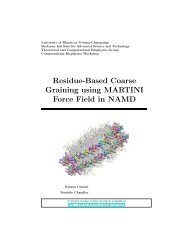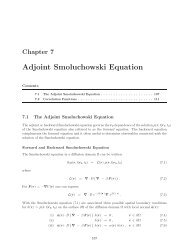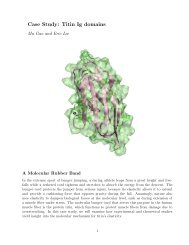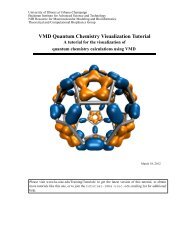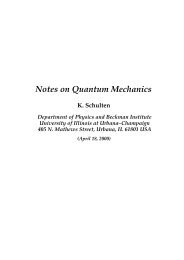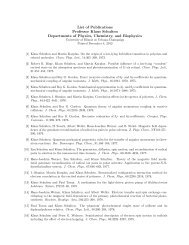Free-energy calculations - Theoretical Biophysics Group
Free-energy calculations - Theoretical Biophysics Group
Free-energy calculations - Theoretical Biophysics Group
Create successful ePaper yourself
Turn your PDF publications into a flip-book with our unique Google optimized e-Paper software.
16 PEARLMAN, KOLLMAN (1989)<br />
<strong>Free</strong>-<strong>energy</strong> perturbation <strong>calculations</strong> How to deal with large perturbations?<br />
17 KULLBACK, LEIBER (1951); POHORILLE ET AL. (2010)<br />
As a function of the problem of interest, choosing intermediate<br />
states separated by a constant ∆λ may not be<br />
the best possible choice — e.g. charging of a Lennard–<br />
Jones particle, for which ∆A is a quadratic function of the<br />
charge.<br />
How should N and ∆λi be chosen?<br />
One method for optimizing both N and ∆λi consists in<br />
starting with short runs with a large N and select the<br />
number of intermediate states and the corresponding values<br />
of the coupling parameter on the basis of these runs,<br />
such that the estimated variances in P(∆Ui,i+1) are sufficiently<br />
small and approximately equal. 16<br />
N and ∆A are related through the work dissipated in the<br />
process: 17 N0 ∝ exp(βW1) and N1 ∝ exp(βW0), where<br />
W0 = 〈∆U〉0 − ∆A and W1 = −〈∆U〉1 + ∆A.<br />
Chris Chipot <strong>Free</strong>-<strong>energy</strong> <strong>calculations</strong>


